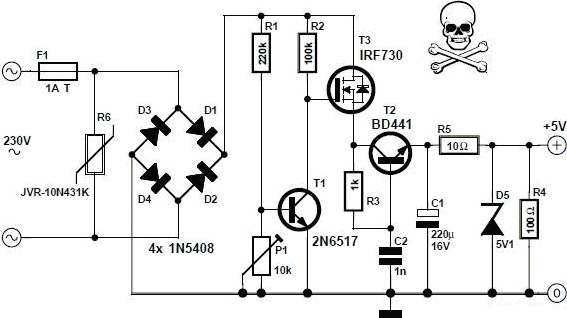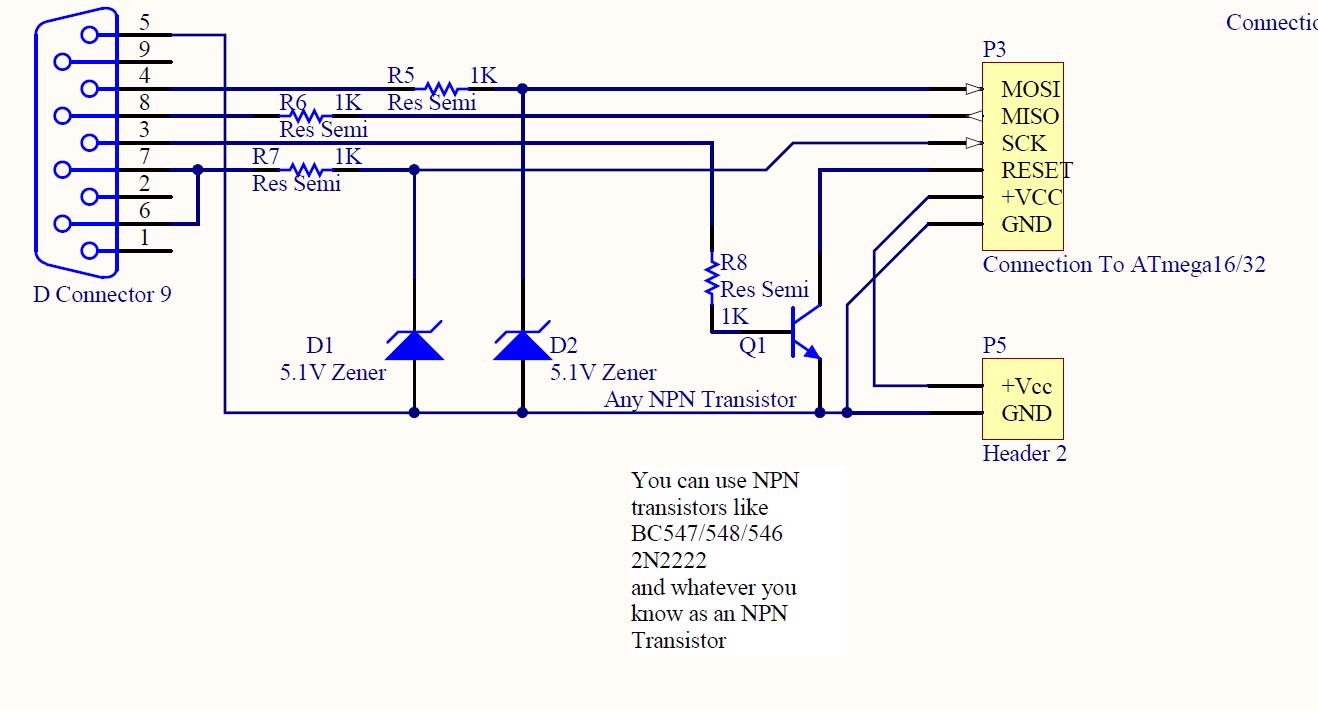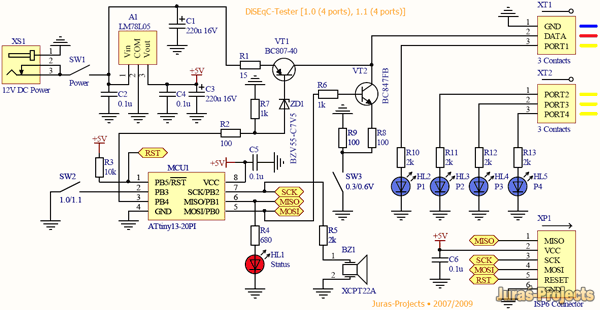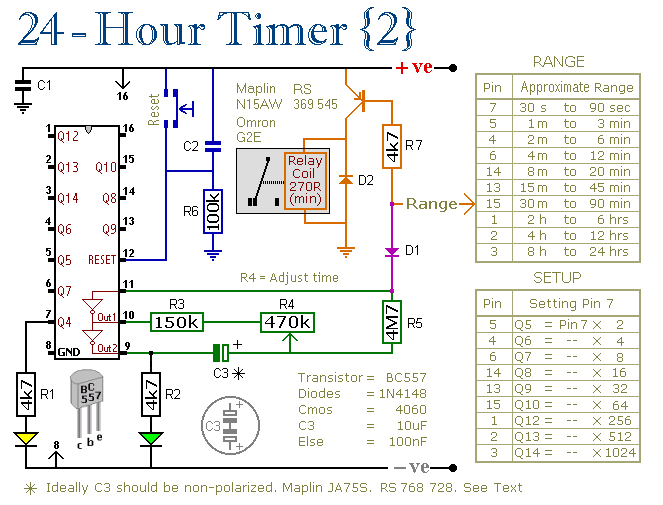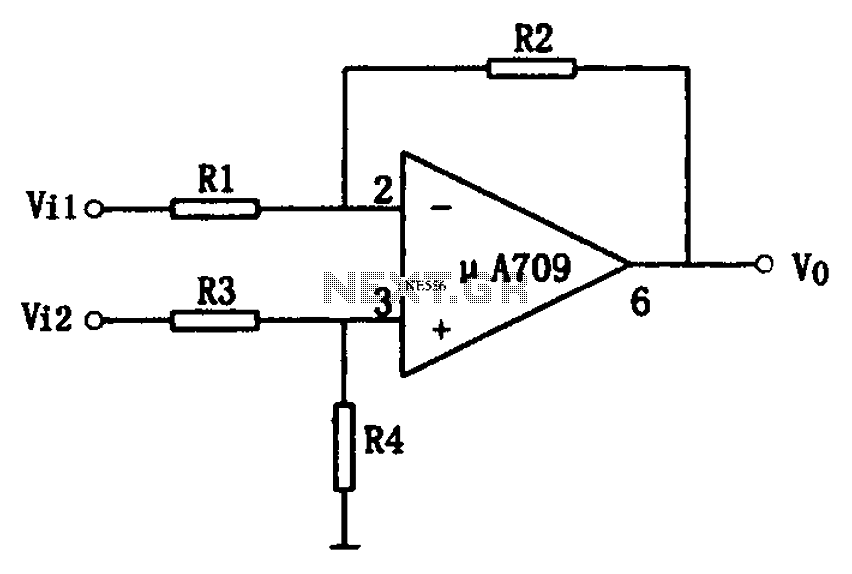
Simple AVR Programmer

This is a simple AVR programmer designed for Atmel microcontrollers from the AVR family that support serial programming. The programmer connects to a PC via the RS232 serial interface and is compatible with PonyProg or Avrdude software. It is based on the SI-Prog design from the author of the PonyProg software. The AVR programmer can program various microcontrollers, including Attiny13, Attiny26, Attiny2313, Atmega48, Atmega88, Atmega168, Atmega16, and Atmega8, demonstrating reliable performance. It has been tested with desktop computers and laptops, functioning effectively both with and without a USB-to-RS232 adapter.
The AVR programmer circuit is designed to facilitate the programming of a range of Atmel microcontrollers using a straightforward RS232 interface. The primary components of the circuit include a level shifter to convert the RS232 voltage levels to TTL levels suitable for the microcontrollers, a connector for the target microcontroller, and necessary passive components to ensure stable operation.
The circuit typically employs a MAX232 or similar IC to handle the conversion between the RS232 signals and the TTL logic levels. This IC is responsible for translating the voltage levels from the PC's serial port (which operates at ±12V) down to the 0V to 5V range used by the microcontrollers. The programmer connects to the microcontroller's programming pins, which include MOSI, MISO, SCK, RESET, and VCC.
In addition to the core components, the design incorporates decoupling capacitors to filter out noise and stabilize the power supply to the microcontroller during programming. The programmer can be powered either through the RS232 connection or an external power source, depending on the configuration and requirements of the specific microcontroller being programmed.
For software integration, the programmer is compatible with widely used programming environments such as PonyProg and Avrdude, which provide user-friendly interfaces for uploading code to the microcontrollers. These tools allow users to select the appropriate microcontroller model, configure the programming settings, and manage the upload process seamlessly.
Overall, this AVR programmer is a versatile tool for developers working with Atmel microcontrollers, offering a reliable and efficient means to program various devices in the AVR family. Its simplicity and compatibility with multiple programming environments make it an excellent choice for both hobbyists and professionals in the field of embedded systems.This is simple to build AVR programmer for Atmel microcontrollers from AVR family. The microcontrollers must support serial programming. AVR programmer is connected to a PC through the RS232 serial interface and can be used with the PonyProg or Avrdude software programmer. AVR programmer is quite simple and it is based on the SI-Prog from the author of PonyProg software. AVR programmer can be used for programming Attiny13, Attiny26, Attiny2313, Atmega48, Atmega88, Atmega168, Atmega16, Atmega8 and it works very well.
I also use the programmer with desktop computer, laptop, with and wihout USB-to-RS232 adapter and it works in all cases. . 🔗 External reference
The AVR programmer circuit is designed to facilitate the programming of a range of Atmel microcontrollers using a straightforward RS232 interface. The primary components of the circuit include a level shifter to convert the RS232 voltage levels to TTL levels suitable for the microcontrollers, a connector for the target microcontroller, and necessary passive components to ensure stable operation.
The circuit typically employs a MAX232 or similar IC to handle the conversion between the RS232 signals and the TTL logic levels. This IC is responsible for translating the voltage levels from the PC's serial port (which operates at ±12V) down to the 0V to 5V range used by the microcontrollers. The programmer connects to the microcontroller's programming pins, which include MOSI, MISO, SCK, RESET, and VCC.
In addition to the core components, the design incorporates decoupling capacitors to filter out noise and stabilize the power supply to the microcontroller during programming. The programmer can be powered either through the RS232 connection or an external power source, depending on the configuration and requirements of the specific microcontroller being programmed.
For software integration, the programmer is compatible with widely used programming environments such as PonyProg and Avrdude, which provide user-friendly interfaces for uploading code to the microcontrollers. These tools allow users to select the appropriate microcontroller model, configure the programming settings, and manage the upload process seamlessly.
Overall, this AVR programmer is a versatile tool for developers working with Atmel microcontrollers, offering a reliable and efficient means to program various devices in the AVR family. Its simplicity and compatibility with multiple programming environments make it an excellent choice for both hobbyists and professionals in the field of embedded systems.This is simple to build AVR programmer for Atmel microcontrollers from AVR family. The microcontrollers must support serial programming. AVR programmer is connected to a PC through the RS232 serial interface and can be used with the PonyProg or Avrdude software programmer. AVR programmer is quite simple and it is based on the SI-Prog from the author of PonyProg software. AVR programmer can be used for programming Attiny13, Attiny26, Attiny2313, Atmega48, Atmega88, Atmega168, Atmega16, Atmega8 and it works very well.
I also use the programmer with desktop computer, laptop, with and wihout USB-to-RS232 adapter and it works in all cases. . 🔗 External reference
